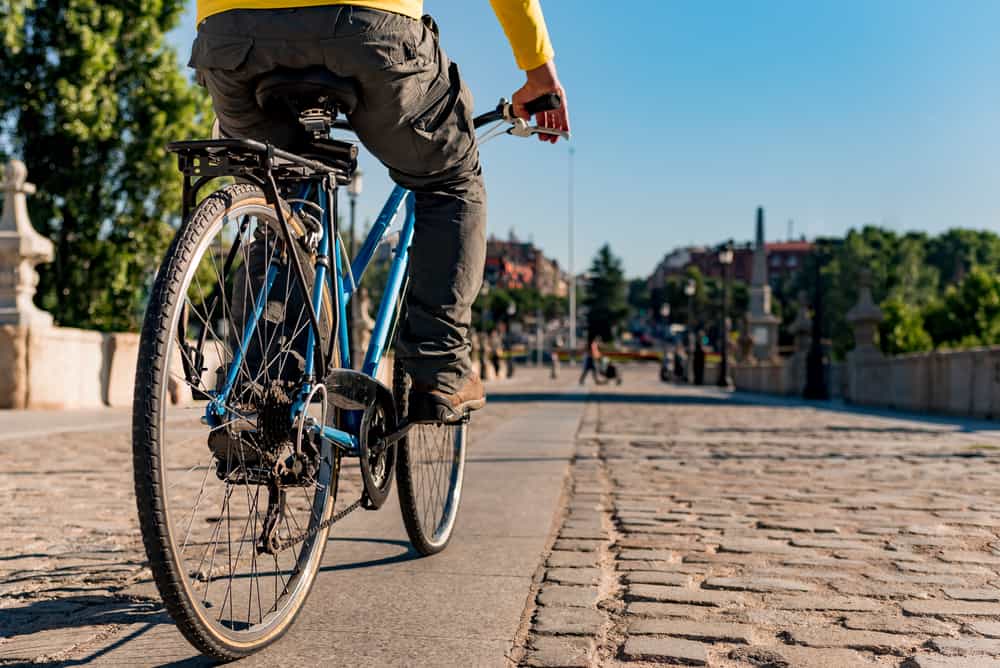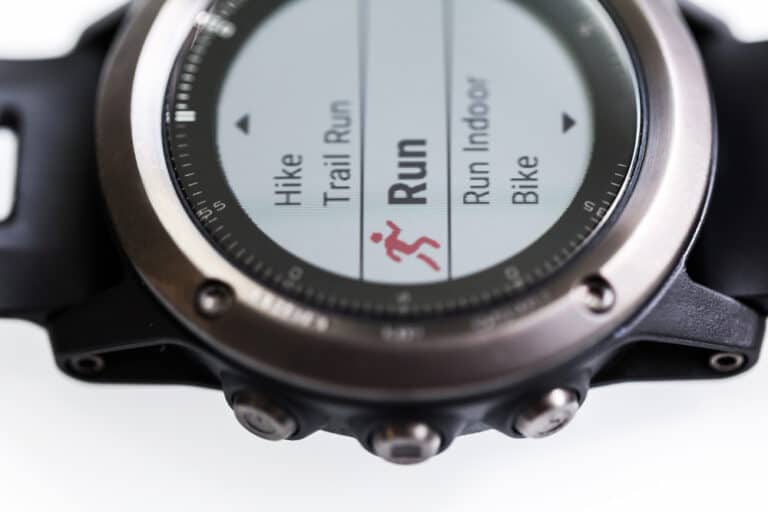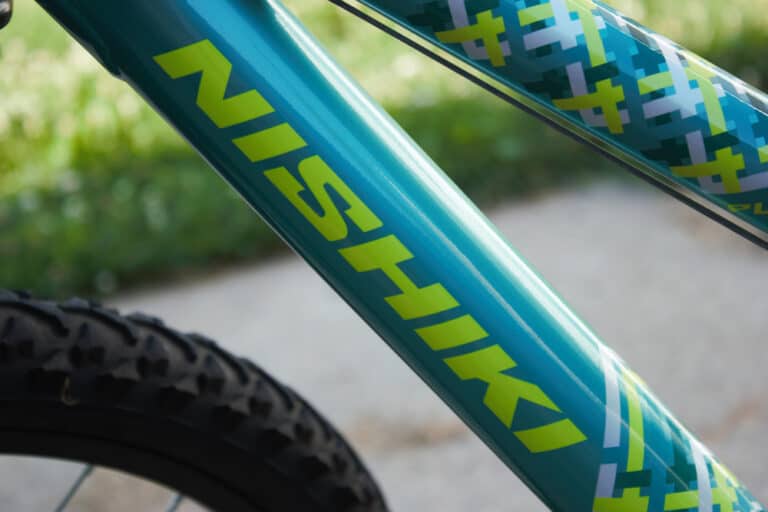Mountain Bike vs. Road Bike Speed

Watching one of the well-known cycle races, you will have noticed the speed at which cyclists hurtle downhill and sprint uphill. Aside from the cyclist’s physical fitness and skill, their bikes play a significant role in performance. Some bikes are for speed and others for leisure and adventure. The bike you choose will determine the speed at which you ride.
Mountain bikes are slower than Road bikes; they’re ideal for off-road riding, and speed is less of a consideration than comfort. Road bikes, however, are designed for speed, and all their components work together to prioritize the fastest ride possible.
Bikes are not one-size-fits-all. There are several differences between Mountain Bikes and Road bikes, each of which plays a role in speed. Consider whether you want to cycle with comfort or speed and the surface you will be cycling on.
Road Bikes Are Faster Than Mountain Bikes
There is no doubt that road bikes are faster than mountain bikes. On average Mountain bike’s speed is between 8 and 14 mph, depending on the strength and experience of the rider. Road bikes are faster at between 14 and 18mph. The difference in speed is because of three key factors; tires, frame, and gear ratios.
Each has a specific purpose, and the specifications align with the riding requirements. Road bikes are built for speed, whereas mountain bikes work for off-road riding. A road bike is 10 – 30% faster on a smooth surface.
On average, it takes a Mountain Bike 2 – 6 minutes to travel a mile; however, it takes a Road Bike roughly between 3 and 4 minutes. Time also depends on the fitness of the rider as well as terrain, road surface, and incline.
Tires Play An Important Role In Speed
Generally, the bigger the tire, the slower the ride; however, if you delve deeper, there is more to this. Mountain bikes have larger tires, thicker tread, and lower tire inflation. Road bikers ride with narrow tires, smoother tire surfaces, and firmer tire inflation reducing rolling resistance.
Rolling resistance refers to the energy that tires lose rotating on a road surface. About 10% of speed is lost when rolling resistance is higher. Ideally, a tire should stay in form and not alter shape during a ride.
Tire Width Makes Bikes Faster Or Slower
Tire width plays a big part because contact with the road affects speed; the more connection there is with the road surface, the slower the ride. Tires change according to weight, and wider tires flatten to ease the load. In contrast, narrower ones absorb weight and spin faster, making them much quicker.
A mountain bike’s tires are far broader than a road bike’s at a width of between 2.25 to 2.4 inches compared to road bikes with a width of 1.75 to 2.2 inches, making mountain bike tires roll slower.
Tire Tread Determines Resistance
Smoother tires go faster and grip the road better. As with the principle of tire width, the tire tread similarly affects speed. A slick tire provides little resistance and rolls off the road quickly, whereas a textured tire with uneven treads slows things down, like that on a mountain bike.
The Elasticity of Tire Compound Impacts Speed
Tires aren’t made of rubber alone; they include a compound that plays a role in speed. Mountain bikes generally have a combination that increases comfort and is durable; this is good for all terrains but makes them slower. On the other hand, Road bikers prefer an elastic compound that facilitates faster movement.
Tire Pressure Makes A Difference
Determining tire pressure depends on a rider’s height, weight, and road conditions. Pressure must be high enough to optimize speed and mitigate energy loss from tire deformation.
Higher tire pressure allows less compression touching a smaller road surface, increasing speed on Road bikes. A softer option minimizes impact but slows down the pace and gives Mountain Bikes the ability to climb varying terrain.

Bike Geography Impacts Speed
The geography of a bike is how the frame’s design is put together and angled. Angles dictate the rider’s posture and impact aerodynamics. A Mountain bike’s frame, compared to a Road bike frame, has fewer sharp angles and is designed for comfort, not speed.
Aerodynamics Affect Speed
Aerodynamics refers to the resistance solid bodies generate when moving through air.
Road bikes maximize aerodynamics; their frame is more compact and the handlebar’s design lets riders take up less width on their bikes and minimize resistance.
Mountain bike frames are sturdier and broader with wider handlebars. Aerodynamics is not a consideration, whereas comfort is.
The Weight Of The Frame Reduces Or Increases Speed
A bike’s frame is pivotal to the speed at which it moves. Mountain bikes are heavier than road bikes, and a standard weight is between 28 and 32 pounds as opposed to Road bike frames which weigh as little as 18 pounds.
Suspension Plays A Role
Softer, supple suspension is ideal for an all-terrain ride providing comfort and negating the impact over rocks and surface changes, reducing speed. In contrast, road bikes have far stiffer frames with little suspension and are faster with a slicker ride.
The Real Difference Is Gears
Seasoned cyclists know all too well the role that gears play is essential for ease of ride and speed. Lower gears make for more leisurely riding, whereas a fast ride requires a change to higher gear ratios. Gears take your pedal power and translate this to the speed at which your wheel turns. Adjusting gears according to effort allows you to keep pace and move forward with the same momentum.
Mountain bikers use lower gears; the top gear is far lower than a Road bike. Lower gears are not optimal for a fast ride but are effective in giving the bike more power to ride off-road and over obstacles.
Road bikes have far more gears than Mountain Bikes. Cyclists adjust them according to the effort required to speed up or slow down. Higher gears on Road bikes allow cyclists to maintain speed even when climbing hills.
Conclusion
Mountain bikes have all-terrain riding tires, a heavier frame, good suspension, and lower gears. The tires are broader. The bike’s structure is more flexible, and gear ratios are lower. The combination of these impact speed, and consequently, a Mountain Bike is 10 – 30 percent slower than Road bikes.
On the other hand, Road bikes are speedy; their tires are thinner, their frames much lighter, and they have more rigid suspension and a more aerodynamic form. Higher gear ratios on Road bikes also assist in maintaining speed with the cyclist’s effort.
References
- https://bicycles.stackexchange.com/questions/1505/how-do-on-road-mountain-bike-speeds-translate-to-road-bike-speeds
- https://www.quora.com/How-big-is-the-speed-difference-between-a-street-bike-and-mountain-bike
- https://road.cc/content/feature/rolling-resistance-how-choose-right-tyres-279289
- https://www.bikeradar.com/






